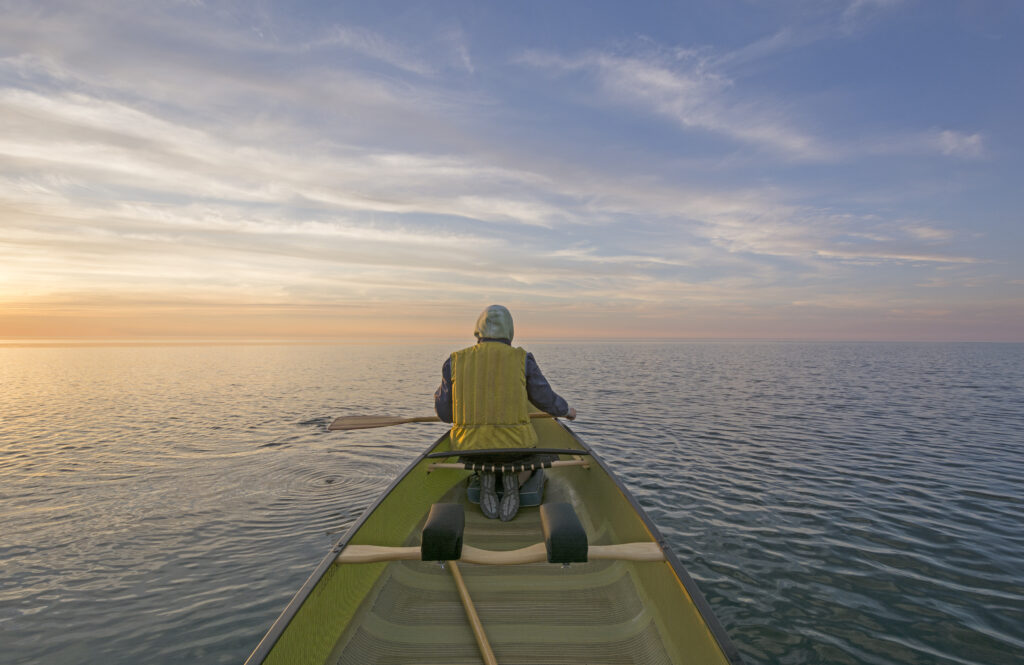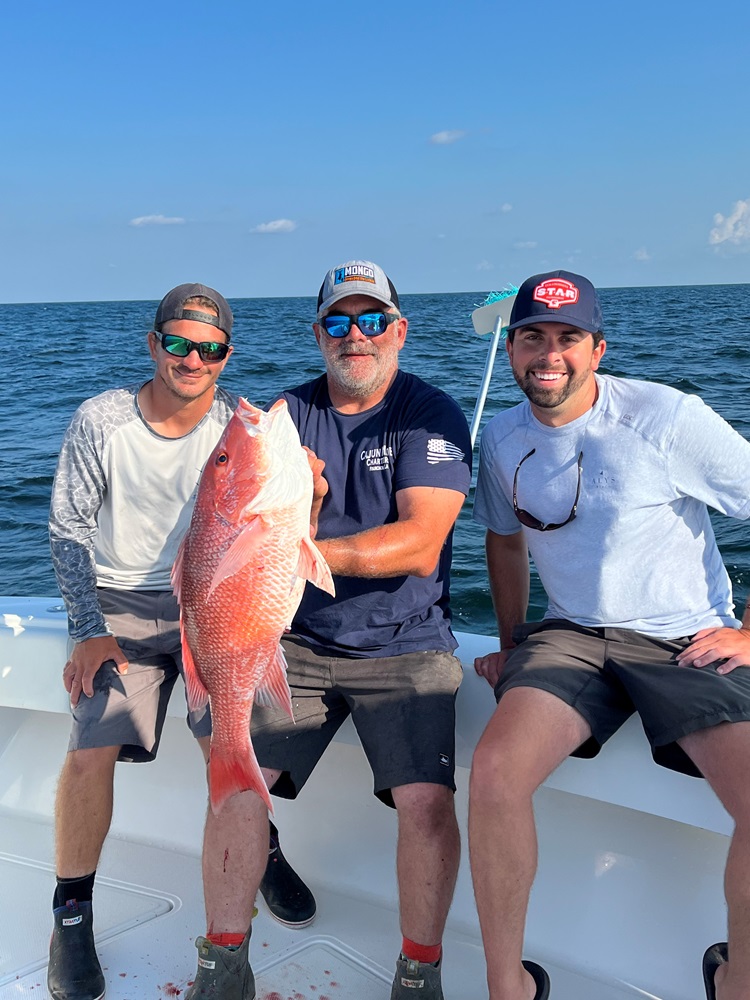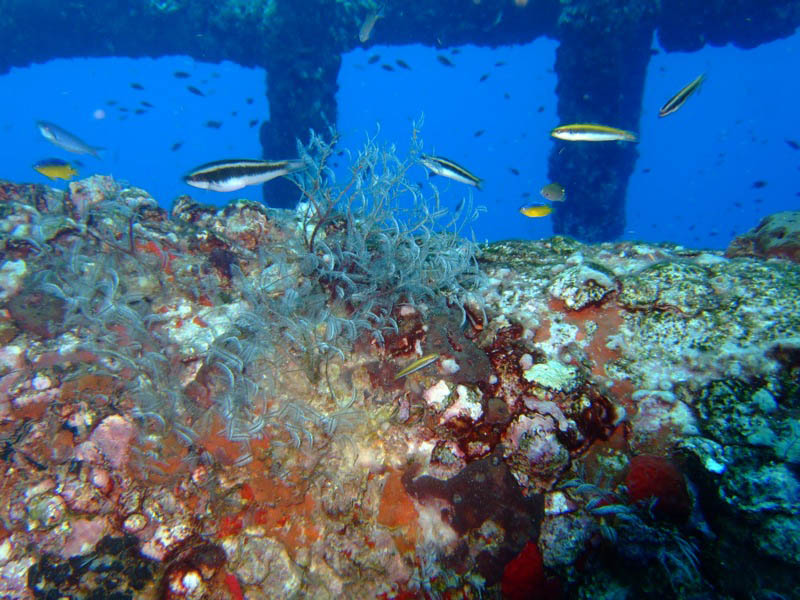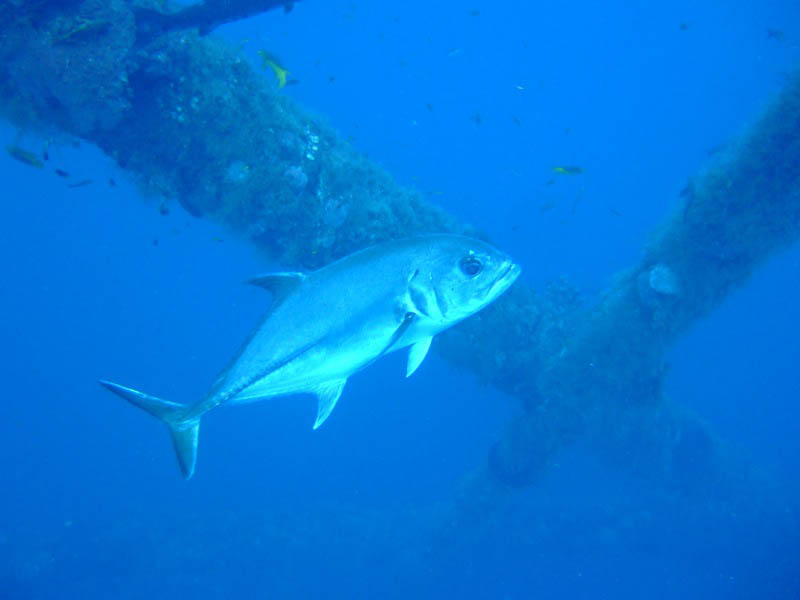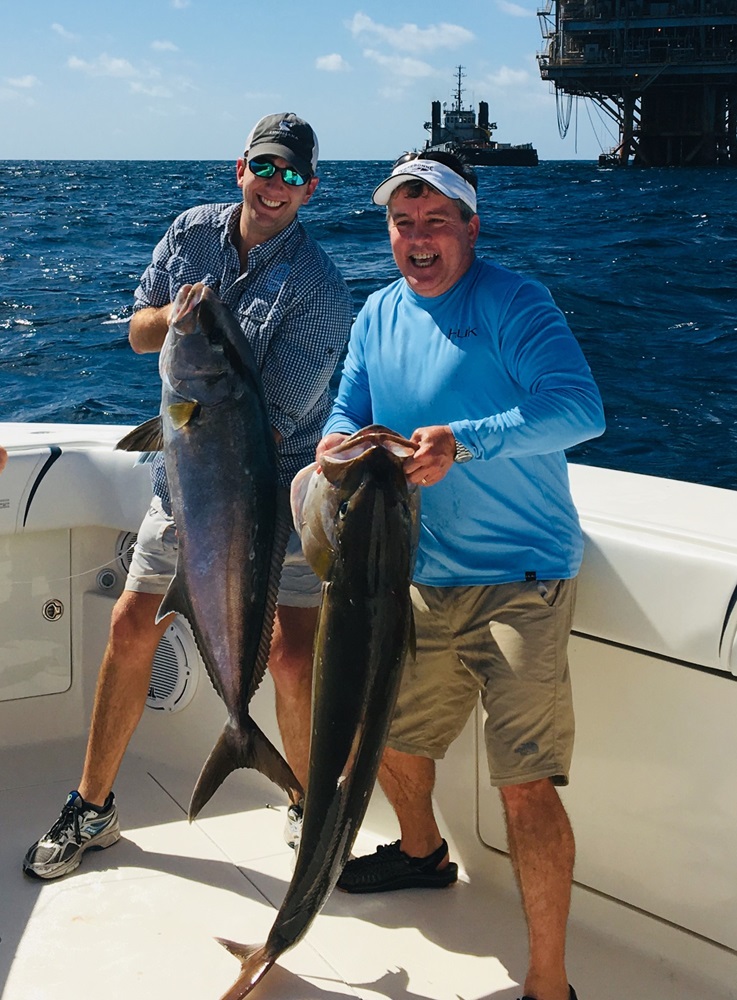In the most significant Gulf menhaden conservation outcome to date, the state’s Wildlife and Fisheries Commission approves half-mile coastwide buffer prohibiting pogy boats from netting, increases fish spill penalties
(BATON ROUGE, La.)— Louisiana’s coastline, gamefish, and recreational angling opportunities will now receive greater protections from the industrial menhaden fishery, after the Louisiana Wildlife and Fisheries Commission approved a revised Notice of Intent (NOI) at a Special Commission Meeting today in Baton Rouge.
The NOI expands the current ¼-mile no-fishing buffer zone, which prevents industrial menhaden harvest near the coast, to ½-mile coastwide, with a broader 1-mile buffer added off Holly Beach. It also establishes more stringent penalties and reporting requirements for future fish spills.
The commission initially decided to take action last October, suggesting a 1-mile buffer after 18 separate fish spills, accounting for over 2.5 million wasted menhaden and at least several hundred dead, breeding-sized redfish, occurred in 2023 alone. Most notably, three spills in early September fouled popular beaches and exacerbated user conflicts with recreational anglers and boaters, and again raised public concerns over the damage being caused to shallow waters by the menhaden industry. The industry firmly opposed the initial NOI.
Following a public comment period and a public hearing at the Feb. 1 meeting, the commission voted to again ask representatives from the menhaden industry and recreational fishing advocacy and conservation organizations to reach a compromise. The compromise modified the NOI to ½ mile, while retaining new penalties and reporting requirements for future net spills from the original NOI. The commission also voted to allow the Louisiana Department of Wildlife and Fisheries to implement the new regulations immediately, ahead of the menhaden season’s start on April 15.
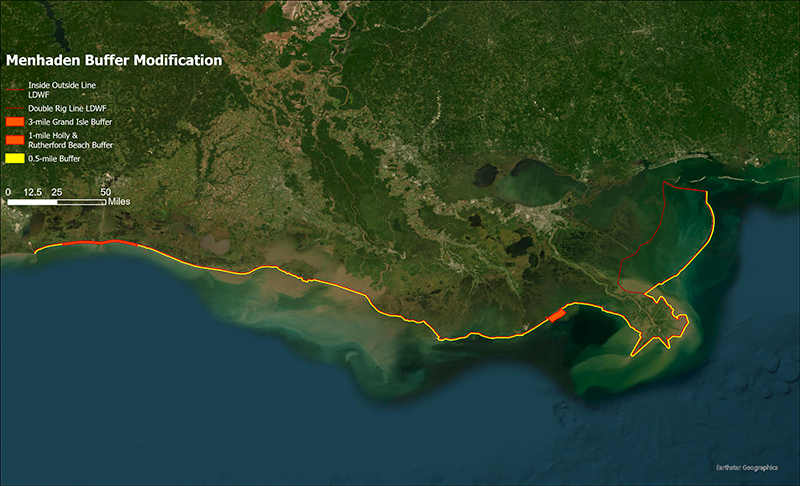
“We were asked by the Commission and Governor Landry to get in a room with the industry and work on a compromise, so that’s what we did. As with any compromise, there is some give and take,” said Coastal Conservation Association Louisiana Chairman Charlie Caplinger. “That said, these new regulations on the industry are a very positive step forward for Louisiana’s coastal zone that will provide much-needed protections for our fragile shorelines and the fish and wildlife that live there. CCA and our coalition partners would like to thank Governor Landry, the Commission, and the new leaders at Wildlife and Fisheries for helping to facilitate this agreement.”
Gulf menhaden, also known as pogies, are a critical food source for iconic Louisiana sportfish like redfish and speckled trout. Approximately 1 billion pounds of pogies are harvested by the industrial Gulf of Mexico menhaden fishery each year, mainly from Louisiana waters. To date, pogy boats have been allowed to fish closer than 500 yards from Louisiana’s shorelines, where the boats often make contact with the water bottom while stirring up sediment with their massive purse seine nets, affecting feeding and spawning for a host of sportfish, birds, and dolphins.
A coalition of recreational fishing, wildlife and habitat conservation, and boating organizations has been working for five years to expand public awareness about the impacts of the Gulf’s industrial menhaden fishery and advocate for some basic conservation measures, such as the ones included in the NOI.
“Conserving and protecting Louisiana’s vast but diminishing coastal fisheries and critical barrier islands, beaches and marshes has been the goal of our coalition for the last five years,” said Chris Macaluso, director of the Center for Marine Fisheries for the Theodore Roosevelt Conservation Partnership. “We have consistently worked with the Wildlife and Fisheries Commission, Department of Wildlife and Fisheries staff, concerned anglers, charter captains, conservationists, lawmakers at every level, and the menhaden industry to enact meaningful regulations that can help accomplish that goal while recognizing the importance of commercial fisheries to Louisiana’s economy and culture. The Commission deserves a lot of credit for recognizing the validity of our coalition’s concerns and taking a big step forward in protecting Louisiana’s coast.”
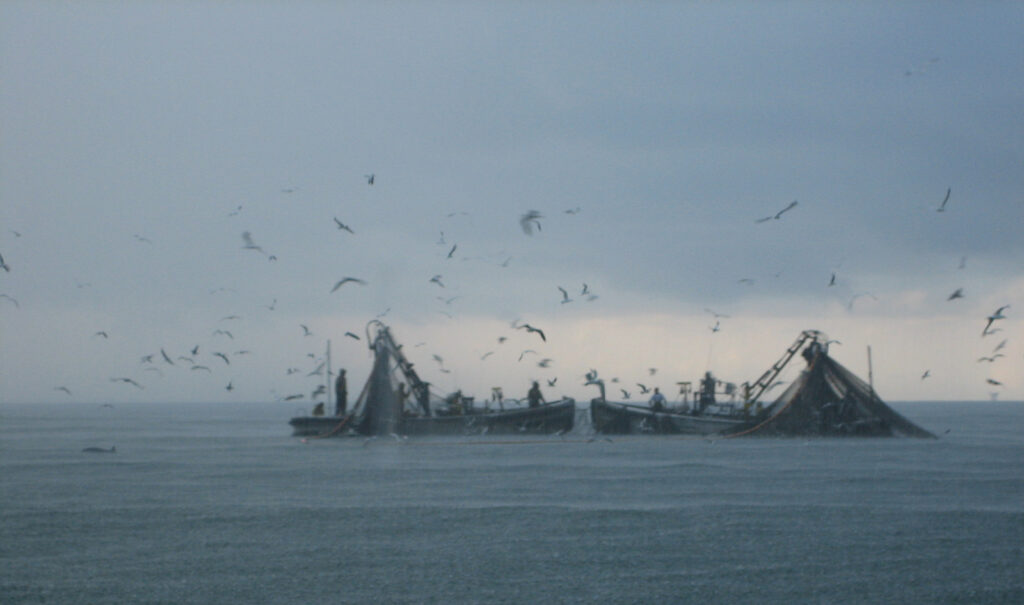
In 2021, Representative Joe Orgeron (R-54) first introduced a bill in the Louisiana Legislature which proposed a nearly identical buffer to this NOI (HB 535). Due to industry opposition, the bill ultimately did not pass, but it did jumpstart a dialogue between the public, legislators, and other decision-makers about the impacts of intensive purse seine netting activity along Louisiana’s fragile coastline, and the impacts of bycatch on economically important species for other user groups, particularly redfish and speckled trout.
“For over three years, efforts have been made with little progress to get some common-sense regulations and policies put into place for the Gulf of Mexico reduction menhaden industry,” said Representative Joe Orgeron (R-54). “It now appears that these actions by the commission going forward will provide both increased scientific gathering on Louisiana’s largest fishery segment, as well as a better balance between the involved stakeholders for the upcoming 2024 season.”
“We commend the Louisiana Wildlife and Fisheries Commission for this important step forward to increase the menhaden harvest buffer zone, as well as address the conservation and user conflict benefits that will come with it,” said Richard Fischer, CEO for the Louisiana Charter Boat Association, the nonprofit trade association that represents the best interests of Louisiana charter captains. “We also thank Governor Jeff Landry for exhibiting strong leadership by overseeing the brokering of this agreement, as well as Representative Joe Orgeron for being such a strong and vocal buffer zone champion in the Louisiana Legislature.”
The NOI will now go through a 30-day oversight period, where the joint Legislative Oversight Committees may choose to review it and make alternative recommendations. If they take no action, the NOI will be formalized as a final rule ahead of the 2024 menhaden fishing season.
Gulf Menhaden Coalition members include the Coastal Conservation Association (CCA), CCA Louisiana, CCA Mississippi, CCA Alabama, CCA Texas, CCA Florida, Theodore Roosevelt Conservation Partnership, Louisiana Charterboat Association, American Sportfishing Association, National Marine Manufacturers Association, Bonefish and Tarpon Trust, International Gamefish Association, Angler Action Foundation, Congressional Sportsmen’s Foundation, Audubon Delta, Guy Harvey Foundation, Marine Retailers Association of the Americas, Mississippi Wildlife Federation, and Wildlife Mississippi.

